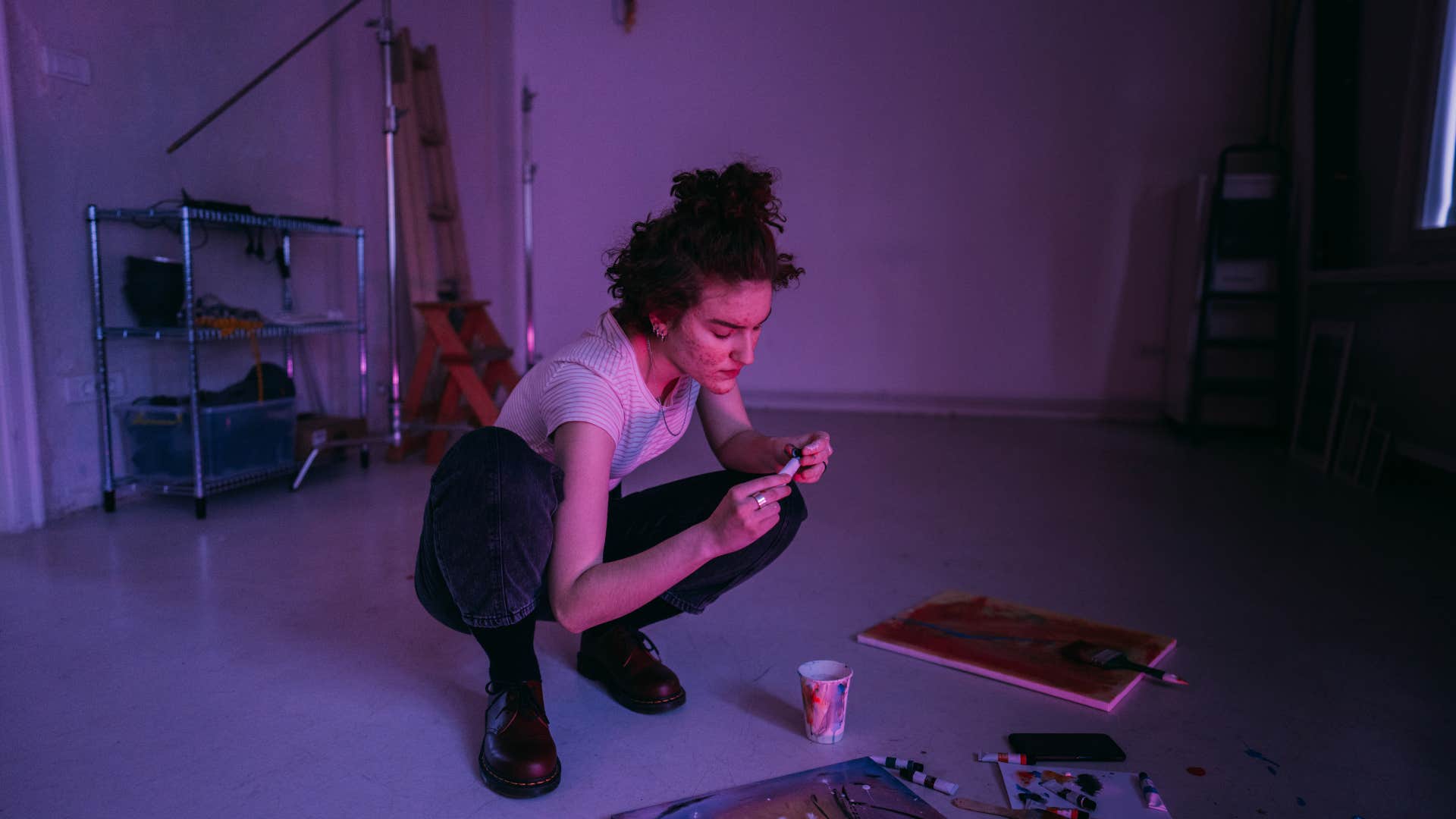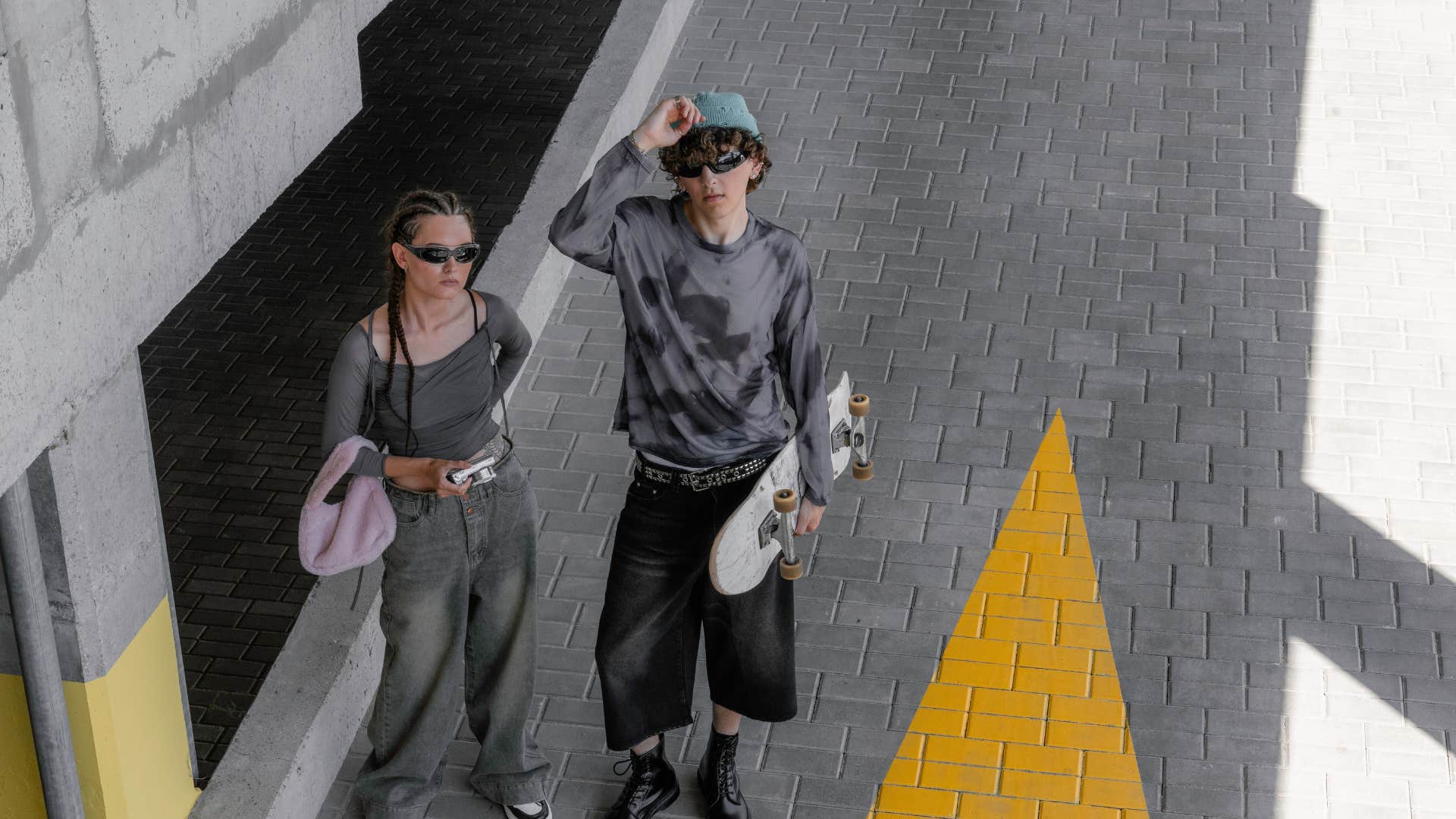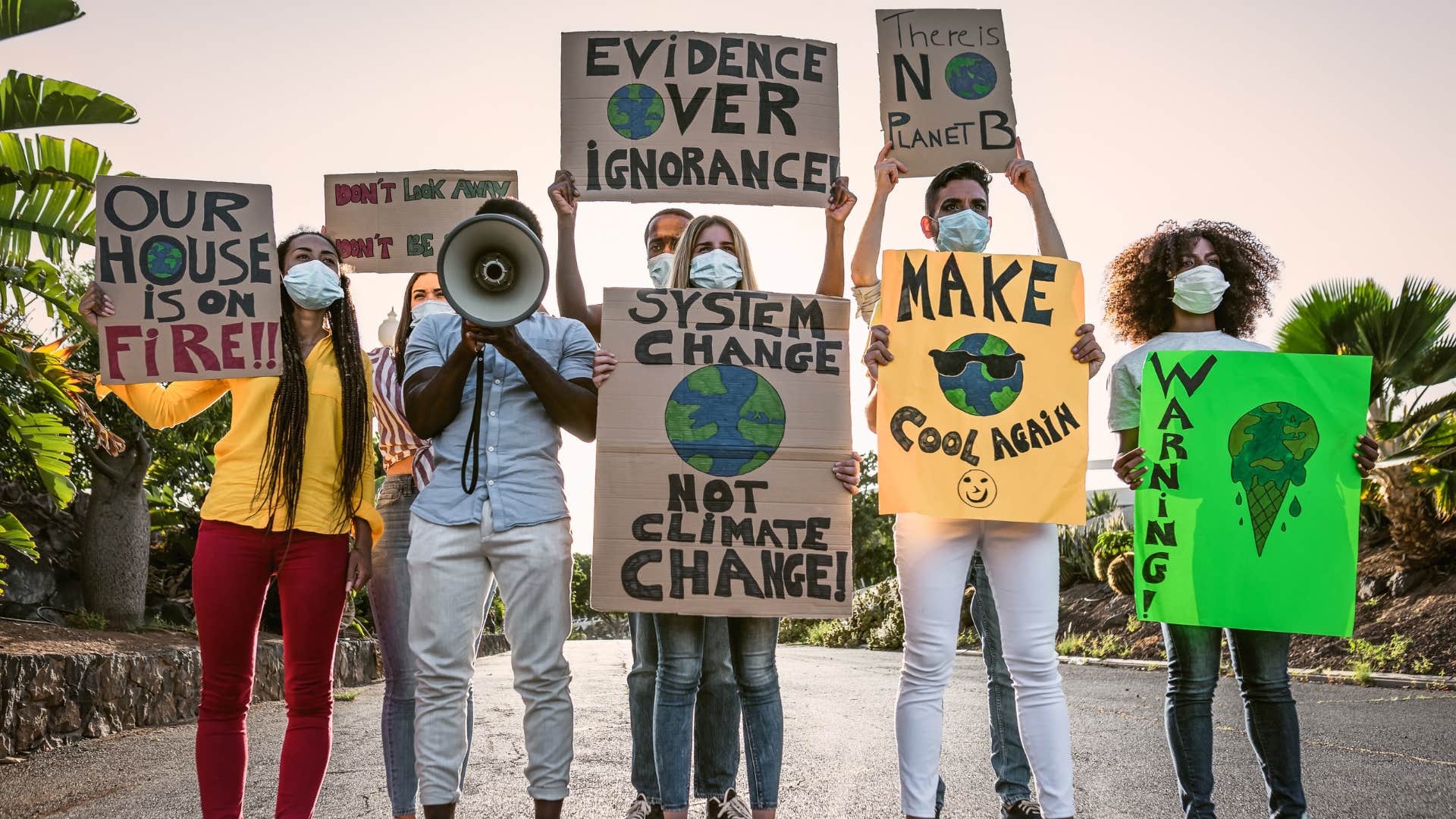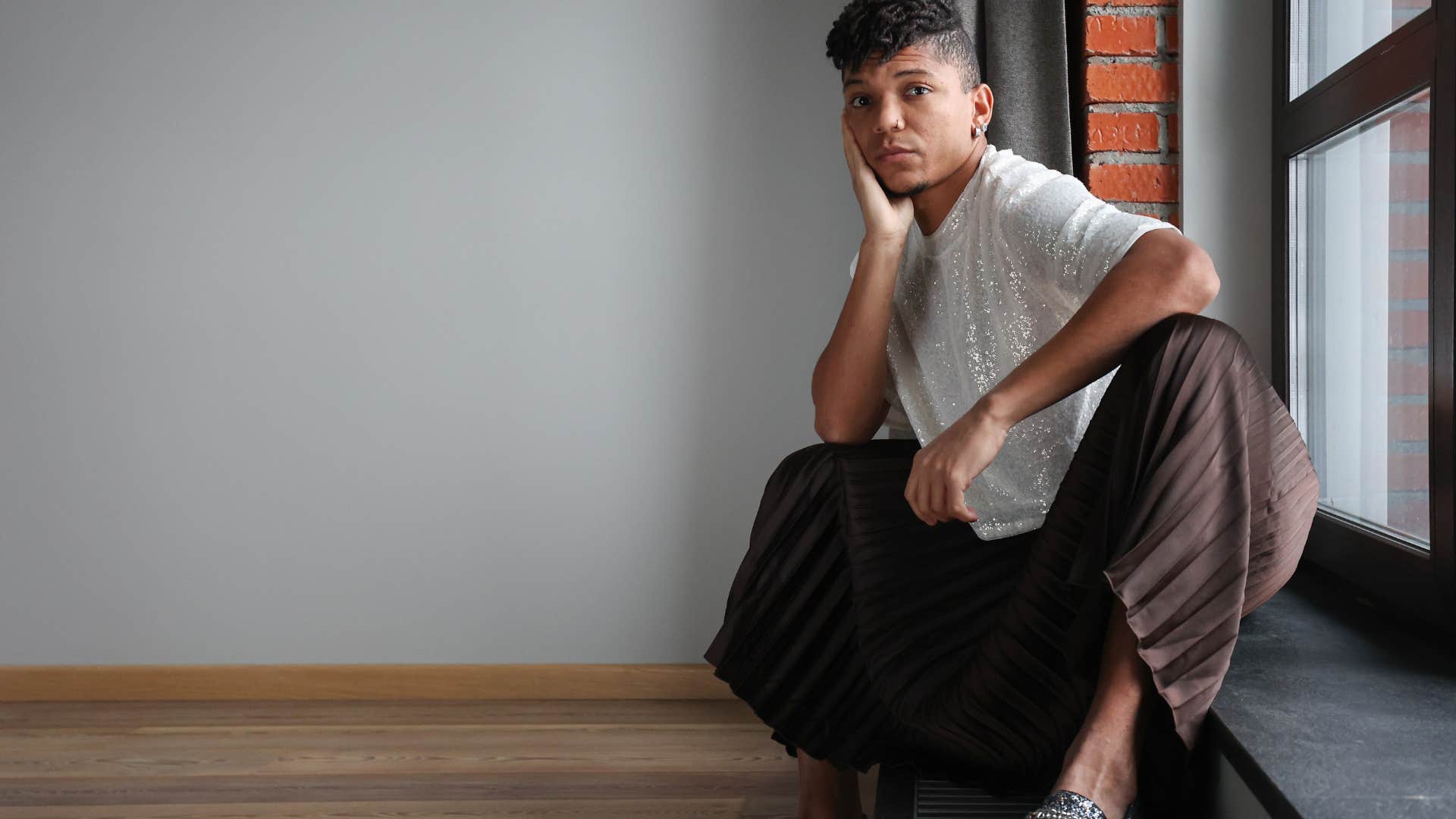11 Things Gen Z Thinks They Invented But Actually Existed Way Before Their Time
Gen Z wants to take credit for being the most innovative demographic, but these things existed before they even thought of them.
 MAYA LAB / Shutterstock
MAYA LAB / Shutterstock Every generation believes they are the best thing since sliced bread. In their minds, they are blazing new trails, breaking old norms, and bringing new and innovative ideas to the world. Gen Z is no stranger to this mindset. They are creative and tech-savvy, but many of the "new" discoveries they take credit for are oldies-but-goodies from the past.
Fashion, slang, and social movements are just a few of the things that Gen Z claims, but have been around for a long time. While they do bring a lot of new and amazing things to the table, many of their creations are just proof of history repeating itself. They simply have more visibility due to social platforms, and that's a great thing. Reinvention is necessary, and each generation should carry the torch of its ancestors, but let's call a spade a spade. Some of the things that Gen Z thinks they invented actually existed way before their time.
Here are 11 things Gen Z thinks they invented but actually existed way before their time
1. Shopping at thrift and secondhand stores
 Emma Rahmani from corelens via Canva
Emma Rahmani from corelens via Canva
Gen Z considers themselves more astute about their money, so it's no surprise that they have embraced the thrift store aesthetic. They proudly show off their vintage and classic style, believing that they are unique and edgy. But this is not new to any of us older generations. The difference is that we shopped secondhand out of need, not style.
Baby Boomers and Gen X were digging through the bins at Goodwill when it was not at all socially acceptable. If your family was barely making ends meet, your parents likely opted for used clothing so they could get more for their money. Back then, buying from thrift stores meant you were poor. Nowadays, it means you have a sustainable lifestyle and puts you in the cool category.
2. 'New' slang
 View Apart via Canva
View Apart via Canva
When my kids use recycled slang that they have magically converted to mean something new, I can't help but roll my eyes. Terms like slay, vibe, and sus might be shiny and new to them, but for us, they are simply repurposed versions of old lingo.
If you can recall, "vibe" was routinely used back in the 1960s and 1970s counterculture to describe a shared feeling that permeated the atmosphere when a group of people were together. Hippies popularized it to reflect the mood they were in. And we all know that "slay" started in the drag and ballroom communities. Who can forget RuPaul throwing it around and uplifting everyone around him? So, the slang may be new to them, but is old hat to those of us who know.
3. Do-it-yourself (DIY) culture
 AleksandarNakic from Getty Images Signature via Canva
AleksandarNakic from Getty Images Signature via Canva
Where I come from, crafting and do-it-yourself projects were born out of necessity. If you didn't have the funds to buy exactly what you want, you made it whenever possible. Handmade crafts, splashing paint all over a pair of jeans, or tie-dying a shirt were customizations to keep up with fashion trends when it wasn't within our budgets.
For Gen Z, DIY is a form of self-expression. They want to be different and unique from their peers, so many opt to create their own one-of-a-kind styles rather than wear what everyone else is wearing. Projects around the home are one of the hobbies they might partake in and label as "self-care." But to the rest of us, it was normal life when economic times were tough.
4. Advocating for mental health
 SHVETS production from Pexels via Canva
SHVETS production from Pexels via Canva
I'll be the first to admit that Millennials and Gen Z have really normalized transparent conversations about anxiety, depression, and other mental health conditions. They have made therapy and discussing it acceptable and removed the stigma related to admitting you need help. That is so commendable, and I love that for all of us.
But contrary to popular belief, the mental health movement did not start on TikTok or Instagram. Generation after generation of activists, psychologists, and marginalized communities have been talking about it since the 1960s. Social and political changes, such as the Civil Rights Movement, created a shift in mental health care. Large, isolated asylums started to close in favor of smaller, community-based care. The focus became providing more humane and accessible mental health services.
5. Baggy jeans
 Tima Mirahnichenka from corelens via Canva
Tima Mirahnichenka from corelens via Canva
I grew up in the 1980s and 1990s when baggy jeans were the norm, and it wasn't unusual to know exactly what kind of underwear a young man wore because they were always on display. But Gen Z thinks they were the first ones to decide that their pants needed to be two sizes too big and that their boxers should finally get the attention they deserved.
While they think they are reinventing the fashion game, what they are doing is bringing back style choices that the older generations have already laid to rest. Baggy jeans were alive and thriving in the '80s, '90s, and early 2000s among hip-hop, mallrat, and grunge kids. Nobody asked Gen Z to bring them back, yet, here we are.
6. Political and social awareness and activism
 alessandrobiascioli via Canva
alessandrobiascioli via Canva
When it comes to activism, no one can deny that Gen Z is plugged in and aware. They are a politically active generation who stays deeply engaged in social and political causes. They know exactly how to use social media to further their agendas, and their strong moral convictions make them want to show up and be heard. Generation Z has become the face of global political and social activism.
But the idea of young people leading the charge for political and social change is nothing new. The Civil Rights Movement and Vietnam protests, as well as the ACT UP Movement (AIDS Coalition to Unleash Power), are prime examples of grassroots, youth-led activism that have helped to shape society.
7. Minimalist aesthetics
 annastills via Canva
annastills via Canva
Gone are the days when homes were overcluttered with decor and other things that were deemed to be aesthetically pleasing. Nowadays, simple home decor is preferred. Bright and heavy makeup has been nixed in favor of a 'clean girl' aesthetic and neutral palettes. Gen Z has openly taken credit for the minimalist culture and the simplification of our lives.
But in reality, the minimalist movement started in the 1950s and 1960s during the Scandinavian design wave. The art movement was a lifestyle choice adapted by many to promote a simplistic way of living and prioritize functionality over clutter. It was characterized by practical layouts and sustainable materials, and contains neutral color palettes. Gen Z had taken it to the next level, though.
8. Vinyl records and cameras with film
 cottonbro studio from Pexels via Canva
cottonbro studio from Pexels via Canva
Gen Z thinks they are being cool or inventive by picking up a record player and a few vinyl albums. They see cameras with film, like Polaroids, as vintage or classic. But for those of us who came before them, listening to a record player was not an option — it was the option. Who can forget waiting for the picture to develop to see if it turned out right?
I came at the end of the vinyl era, but I distinctly remember my parents partying the week away to old-school music on our record player. Gen Z considers these things to be nostalgic, but how can that be if it is their first time? Vinyl records and cameras that have film have been beloved by many long before they were considered retro.
9. Gender fluid fashion
 Luciano Spinelli from capturenow via Canva
Luciano Spinelli from capturenow via Canva
People think that gender neutral fashion and an androgynous style are progressive today, but rockers, punks, and artists have adapted it a long time ago. Athletes like Stephon Diggs and rappers like Young Thug are believed by Gen Z to be groundbreakers with their gender neutral fashion choices, but that's nothing new to seasoned observers.
Artists like Prince, Michael Jackson, and Harry Styles are just a few of the well-known artists who have made wearing gender-fluid fashions acceptable. All but the latter have been breaking style rules with flair and style long before they became popular and mainstream.
10. Remote work and digital nomad life
 Anna Shvets from Pexels via Canva
Anna Shvets from Pexels via Canva
In the last several years, we witnessed the rise of remote work. Young people had decided that they didn't need to be in the office to be of value and do good work. They have demanded the flexibility to work remotely and requested better technology and accessibility. But despite what they think, Gen Z didn't invent working from anywhere on their laptops.
Freelancers, tech workers, and entrepreneurs have been living the dream of working remotely from anywhere in the world since the beginning of Wi-Fi and the inception of co-working spaces. People have been working remotely. Gen Z just made it look better.
11. Calling out the system
 Stefano Oppo from baseimage via Canva
Stefano Oppo from baseimage via Canva
Gen Z believes that they are the most outspoken generation ever. They stand up for what they believe in, are fearless when it comes to their morals and ethics, and are willing to sacrifice themselves for the common good. From criticizing a capitalistic society to combating toxic work dynamics, they challenge norms regularly, but they are not the first to do so.
Every generation has been filled with anti-establishment rebels. Hippies, activists, and even hackers have questioned authority in their eras and created change by being courageous, even to their detriment. Each generation brings its unique style and way of doing things to society, but we must always give credit to our predecessors who crawled so we could walk.
NyRee Ausler is a writer from Seattle, Washington, and the author of seven books. She focuses on lifestyle and human interest stories that deliver informative and actionable guidance on interpersonal relationships, enlightenment, and self-discovery.

